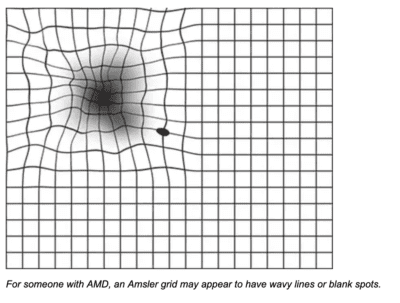When we think about the health risks associated with hypertension, the immediate concerns that come to mind are heart disease and stroke. However,
did you know that high blood pressure can also impact your vision? Age-related macular degeneration (AMD) is a leading cause of vision loss among
older adults, and there is a significant connection between AMD and hypertension.
What is Age-Related Macular Degeneration (AMD)?
AMD is a medical condition that affects the macula, the central part of the retina responsible for sharp and detailed vision. This condition is most
prevalent in individuals over the age of 50 and is characterized by a gradual deterioration of the macula, leading to vision impairment.
AMD occurs in two forms: dry (atrophic) and wet (neovascular). Dry AMD is more common and progresses slowly, while wet AMD is less common but more
severe, often leading to rapid vision loss.
How Hypertension Influences AMD
Research indicates that hypertension, or high blood pressure, is a significant risk factor for developing AMD. Here’s how hypertension can
influence this eye condition:
Impaired Blood Flow: High blood pressure can damage the small blood vessels in the retina, reducing the blood flow needed to
keep retinal tissues healthy. This impairment can accelerate the deterioration of the macula.
Increased Inflammation: Hypertension is associated with chronic inflammation, which can contribute to the development and
progression of AMD. Inflammatory processes can damage retinal cells and lead to the formation of drusen, the yellow deposits characteristic of dry
AMD.
Oxidative Stress: The oxidative stress resulting from high blood pressure can further damage retinal cells. This stress occurs
when there’s an imbalance between free radicals and antioxidants in the body, leading to cellular damage.
Abnormal Blood Vessel Growth: In wet AMD, new and fragile blood vessels grow under the retina. Hypertension can exacerbate this condition, causing
these vessels to leak blood and fluid, which can rapidly worsen vision.
Prevention and Management
Given the connection between hypertension and AMD, managing your blood pressure is crucial not only for your cardiovascular health but also for your vision. Here are some steps you can take:
Regular Eye Exams: Routine eye check-ups can help detect AMD early, especially if you have hypertension. Early detection is key to managing and
slowing the progression of AMD.
Control Blood Pressure: Work with your healthcare provider to keep your blood pressure within a healthy range. This might
include medication, dietary changes, regular exercise, and stress management.
Healthy Diet: A diet rich in leafy greens, fish, and foods high in antioxidants can support eye health. Consider incorporating
omega-3 fatty acids, lutein, and zeaxanthin into your diet.
Quit Smoking: Smoking significantly increases the risk of AMD. Quitting smoking can substantially reduce this risk and improve
overall cardiovascular health.
Protect Your Eyes: Wear sunglasses to protect your eyes from harmful UV light, which can exacerbate AMD.
Conclusion
Understanding the link between hypertension and AMD highlights the importance of holistic health management.
By controlling your blood pressure, you’re not only safeguarding your heart but also protecting your vision.
Regular check-ups and a healthy lifestyle can go a long way in preventing the adverse effects of these interconnected conditions.
Stay informed, take proactive steps, and maintain a balanced approach to your health to enjoy clearer vision and a healthier life.
How to Use an Amsler Grid to Monitor Eye Health and Prevent Vision Loss from AMD
Regular self-monitoring using an Amsler grid can help detect early signs of age-related macular degeneration (AMD) and other vision problems. Here’s how you can test your eyes at home:
Action Steps:
Obtain an Amsler Grid: You can download and print an Amsler grid from reputable health websites, or you might receive one from your eye care professional.
Set Up Proper Lighting: Ensure you are in a well-lit room. Good lighting is essential for accurate testing.
Wear Your Glasses: If you normally wear reading glasses or bifocals, be sure to wear them during the test.
Position the Grid: Hold the Amsler grid at your normal reading distance, about 12 to 15 inches away from your face.
Cover One Eye: Start by covering your left eye with your hand or an eye patch.
Focus on the Center Dot: With your right eye, focus on the dot in the center of the grid. Keep your gaze fixed on this dot throughout the test.
Check for Distortions: While focusing on the center dot, observe the lines of the grid. Note if any lines appear wavy, blurred, or distorted, or if any areas of the grid look dark or blank.
Repeat for the Other Eye: Cover your right eye and repeat the process with your left eye.
Record Your Observations: If you notice any distortions, wavy lines, or blank spots, mark these changes on a printed grid or write them down. Note which eye was tested and the date of the observation.
Compare Over Time: Regularly test your eyes (daily or weekly) and compare your observations over time. This will help you detect any changes in your vision promptly.
Consult Your Eye Doctor: If you notice any changes or abnormalities during the test, contact your eye care professional immediately. Early detection and intervention can prevent or slow the progression of AMD.
Tips for Accurate Testing:
Perform the test at the same time of day for consistency.
Make sure you are not too close or too far from the grid.
Do the test in a quiet place to avoid distractions.
Using an Amsler grid is a simple yet effective way to monitor your eye health and catch early signs of AMD. Regular self-testing, combined with routine professional eye exams, can help maintain your vision and overall eye health.
Subscribe to the Substack here for nursing stories, music, books, and New Orleans culture.